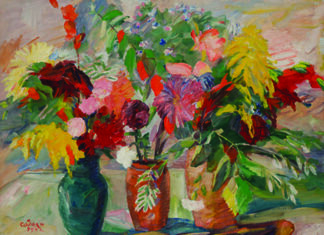By Daphne Abeel
Special to the Mirror-Spectator
CAMBRIDGE, Mass. — Mashtots Professor of Armenian Studies James R. Russell expressed justifiable satisfaction as he oversaw the final details of an exhibit of Armenian books that opened at Harvard University’s Lamont Library on Monday, April 9.
Said Russell, “We started planning this about a year ago. Our core group included Marc Mamigonian from NAASR [National Association of Armenian Research and Studies], Barbara Merguerian from ALMA [the Armenian Library and Museum of America] and Michael Grossman from Widener Library. Grossman is chief cataloguer for Armenian and Georgian books. We didn’t have a designer but Mark
McKertich and Todd Pattison, who is in charge of conservation for the entire Harvard library system, organized the space and set up the exhibit.”
Russell says he was moved to mount the exhibit out of the knowledge that few Harvard students know very much about Armenian history and culture. Said Russell, “Harvard is a place where students come to study large things in the world. Most Armenian students here are involved in that endeavor. Few people are interested in language and history and I wanted to undertake this exhibit to display the scope of Armenian culture and history.” The exhibit itself is mounted on the third floor of Lamont Library and consists of two horizontal cases of books, periodicals and scrolls and one large vertical glass case that contains a copy of Russell’s text, “The Armenians and the Book,” and additional materials.









